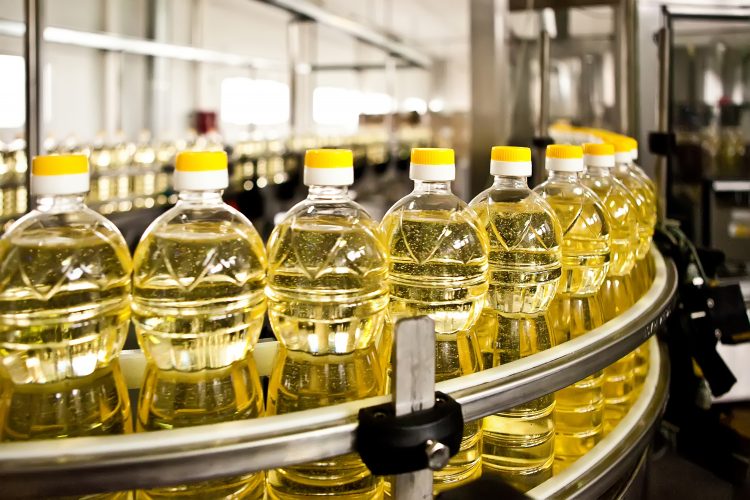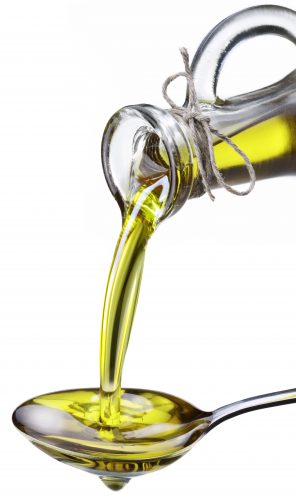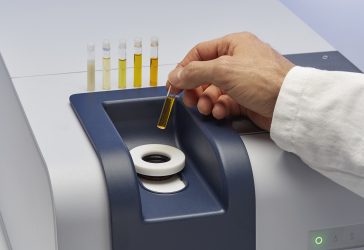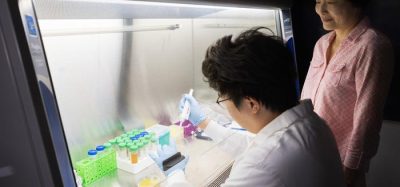Is FT-NIR spectroscopy the way forwards in edible oil testing?
- Like
- Digg
- Del
- Tumblr
- VKontakte
- Buffer
- Love This
- Odnoklassniki
- Meneame
- Blogger
- Amazon
- Yahoo Mail
- Gmail
- AOL
- Newsvine
- HackerNews
- Evernote
- MySpace
- Mail.ru
- Viadeo
- Line
- Comments
- Yummly
- SMS
- Viber
- Telegram
- Subscribe
- Skype
- Facebook Messenger
- Kakao
- LiveJournal
- Yammer
- Edgar
- Fintel
- Mix
- Instapaper
- Copy Link
Posted: 27 August 2020 | Bethan Grylls (New Food) | No comments yet
When it comes to testing edible oils, most will rely on chromatography or wet chemical methods. Looking to improve productivity and reduce cost, Lesieur adopted a different approach; New Food’s Editor, Bethan Grylls finds out more.


Edible oils are fundamental to cooking; not just in terms of acting as a lubricant, but also for adding flavour and providing key nutrients such as vitamin E. Unbeknown to the consumer, however, production of this commonplace ingredient is far from simple, causing significant challenges for the manufacturer.
The various components that make up the oil are susceptible to oxidative processes, which can cause volatile and non-volatile degradation.1 Like any food, it is also important to ensure the oil is safe for consumption – for example by testing environmental and industrial adulteration issues, such as the presence of pesticides or 3-MCPD.2 But knowing that the general composition and key parameters of the oil are also fit-for-purpose for the given task is essential.
As a consequence, a reliable and precise test method is needed.
In this article, New Food hears from edible oil specialist Mickael Watiez, Lesieur’s research and innovation lead, about the edible oil company’s operations and its decision to move to an unconventional quality control (QC) technology.
Lesieur is a centenary French company which produces a variety of vegetable oils and condiment sauces across its four factories located in Bassens, Coudekerque, Grand-Synthe and Vitrolles.
Avril
Avril – Lesieur’s parent company – creates sustainable value in the oils and protein sectors. As such, it has created an organisation whereby each activity (grain processing, human foods, animal nutrition and expertise, renewable energies and chemistry) creates value for all the other links in the chain and the actors therein. Its business model operates on the concept of circular economy, systematically reinvesting profits into its sectors to promote growth.
Avril’s various activities are handled by separate businesses under the Avril umbrella, which are divided into five major lines: oilseeds processing, oils and condiments, specialities (oleochemical and animal), animal nutrition and processing, and its development line for activities that involve a “tailor‑made” approach. Here, we focus on the production of its oilseed product activities in human foods, which involves several of its subsidiaries.
Edible oil production
Avril handles the oilseed process from seed to table and this starts with grain collection. Following harvest, oilseed grains (rapeseed and sunflower) are collected from farmers and stored in conditions that preserve their quality and enable their processing to be staggered throughout the year. Assured by cooperatives and trading firms in France, Avril is partly responsible for the collection process in Romania through its company, Expur.
Once the grains have been collected, they are crushed. This enables Avril to obtain vegetable oil and oilseed meals – the latter being used for livestock feed.
Raw or refined, the vegetable oils are exploited for either human foods or renewable energy chemistry; Lesieur is one of six of its businesses that deals with products for human consumption.
FT-NIR technology
FT-NIR stands for Fourier transform near-infrared spectroscopy – it is a non-destructive analysis technology and an alternative to conventional techniques such as wet chemical


Although a cupboard necessity, the production process of edibles oils is far from simple
methods and chromatography used within QC.
“We receive the crude oil and after several steps of refining, we obtain an oil without flavour and components that could deteriorate the oil before the best-before-date,” explained Watiez. “We then blend the refined oils depending on the brand. FT-NIR is used during all these processes from crude oil to bottling.”
As the company produces a range of edible oils, Watiez explained that they use FT-NIR for the detection of adulteration to ensure there are no traces of previously bottled oils in the current bottle. For example, peanuts in its sunflower oil.
“We also use it to check blends because we have to respect our nutrition labelling. We also have to ensure that the end product delivers to that expectation by the measure of peroxide indexes.”
Because each oil has a specific fatty acid profile, this enables FT-NIR to determine its particular qualities, according to Watiez.
“We can safely say ‘in this oil, we can easily detect an adulteration of less or up to two percent’,” he noted.
As this is not an “official” approved technique, the onus is on Lesieur to prove that it offers the same accuracy as conventional methods. This is the biggest challenge when it comes to FT-NIR, Watiez explained. “It will take time to prove this, but we are working hard to normalise this process.
Before the testing even begins, however, the FT‑NIR equipment must be calibrated – in other words, assessed and set up according to each product and what the technology will be measuring. To set up a calibration, many samples – approximately 200 – are required in the process. The first 50 are used to check that the technique is suitably set up and the remaining are used to assess the quality and safety of the oil.“As it is not official, we have to test the final product using a conventional chromatography technique. Currently, FT-NIR is only used to test samples – but that’s still 90 percent of all our analyses.”
One of the reasons why Lesieur chose FT-NIR can be owed to the large number of calibrations required, due to the variations of product types and instruments involved.
“FT-NIR technology allows you to easily transfer calibrations from one instrument to another,” explained Watiez. This avoids the need to recreate calibrations for each tool, saving time and money. “One person creates the calibration, and this is shared across our different factories in France. Today we manage approximately 300 calibrations to drive all the processes in Avril Group (refining, bottling, crushing, etc…).”
FT-NIR technology gives us results in 30 seconds.
The speed at which FT-NIR works is also a unique benefit, according to Watiez. “We need 30 seconds for analysis compared to a conventional method, which can take about six hours.”
The technique also enables several parameters to be analysed with only a single measurement – an invaluable asset for Lesieur given that there are approximately 20 parameters to measure in its oils. By consequence, this also means technicians can analyse more samples by conventional methods.
“It is very important to have fast (and accurate) results, because the operator can then better drive the process, which then leads to improved productivity.”
Watiez explained that the initial reason for investigating new methodologies was that the company was experiencing “issues with productivity in the lab and in production”.
As such, Lesieur sought a method that could help with both; Watiez came across several publications written by a Canadian scientist, Dr Hormoz Azizian, which praised the application of FT-NIR for refined oil.

The company approached Bruker, which developed FT-NIR solutions, but at the time not for oil. “It was difficult to know whether it would work,” Watiez said, “but we reasoned that our combined knowledge would be sufficient to develop a suitable solution” – and they were right.
Now, with the use of FT-NIR, the company can release the trucks that unload the crude oil much faster.
It did not take long to become familiar with the new technique either, Watiez reported. “It is very simple to use and can even be used by an operator with no analytical knowledge.” In fact, it took the company one day to get used to analysing samples and one month to develop and validate calibrations. “This is because we have a lab in each factory which gives us results from conventional methods to calibrate NIR,” Watiez explained.
In terms of advice regarding sourcing equipment, Watiez pointed to five key factors: precision of results, ease of use, robustness, quality of support and price.
Having worked with FT-NIR now for several years, Watiez remains positive about the company’s decision. The only improvement? “If the size were reduced, it would mean measurements could be taken in the field or directly in a truck. It’s not easy to transport at its current size!” Right now, the high precision FT-NIR technology requires a larger setup area, but it seems like a small price to pay in the grand scheme of things – and who knows, perhaps this is something that will soon be realised.
Biography
Mickaël Watiez is an Analytical Chemistry engineer and the R&D Center Manager of Lesieur, Avril Group. For 15 years, he has been working in oils and fats analytics; his priority is to develop analytical solutions to measure new parameters like contaminants and improve the productivity in Avril Group’s labs and plants.
References
1. Matthäus B. Oxidation in Foods and Beverages and Antioxidant Applications: Management in Different Industry Sectors, 2010
2. MacMahon S. Functional Dietary Lipids, 2016









